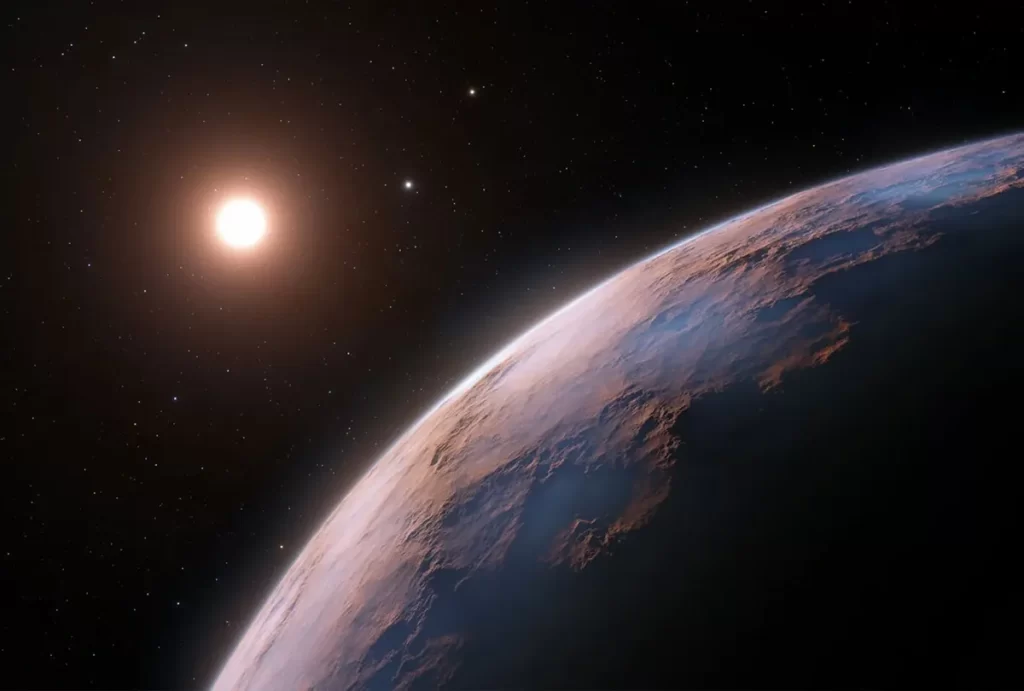In an exciting development in the field of astronomy, researchers have identified an exoplanet orbiting the closest single star to our Sun, Epsilon Indi A. This newly discovered planet, referred to as Barnard b, boasts intriguing characteristics that may offer insights into the existence of similar worlds beyond our own. With a mass at least half that of Venus and a remarkably short orbital period of just over three Earth days, Barnard b presents both opportunities for further research and challenges regarding its potential habitability.
The Discovery Process
The discovery of Barnard b was made by a team of astronomers utilizing the European Southern Observatory’s Very Large Telescope (ESO’s VLT). This finding has been documented in a research paper published in the journal Astronomy & Astrophysics. Jonay Gonzalez Hernandez, the lead author of the paper, highlighted the team’s confidence during their search for a hypothesized Earth-like planet within the habitable zone of Barnard’s star.
Barnard’s star, which ranks as the second-closest stellar system to Earth (after the three-star system of Alpha Centauri), has long been a focal point for astronomers seeking to explore the possibilities of life beyond our solar system. The team’s initial aim was to locate a planet with three times the mass of Earth; however, the discovery of Barnard b suggests a vibrant cosmic neighborhood teeming with potential.
Characteristics of Barnard b
While Barnard b’s mass places it among the smallest known exoplanets, its proximity to its host star raises significant concerns about its habitability. Gonzalez Hernandez noted that Barnard b orbits closer to its star than what is typically considered the habitable zone—where conditions might allow for liquid water to exist on a planet’s surface. Despite Barnard’s star being roughly 2,500 degrees Fahrenheit cooler than our Sun, the intense heat at Barnard b’s orbit makes it unlikely that water could persist in liquid form.
In his remarks, co-author Alejandro Suarez Mascareno emphasized the significance of Barnard b’s discovery, stating that it exemplifies the abundance of low-mass planets in our cosmic vicinity. He pointed out that this planet, along with other discoveries like Proxima b and d, highlights the potential for a rich diversity of planetary systems in close proximity to Earth.
The Importance of Future Research
The implications of Barnard b’s discovery extend beyond just this one planet. The astronomers suspect that there may be up to three additional exoplanets orbiting further from Barnard’s star, broadening the scope for exploration and study. This potential for additional planetary bodies invites further inquiry into the characteristics and compositions of these newfound worlds.
The excitement within the astronomical community is palpable, especially with the upcoming construction of the Extremely Large Telescope (ELT) by the European Southern Observatory. Expected to significantly enhance our capabilities for exoplanet research, the ELT will be equipped with instruments designed to detect more small, rocky planets in the temperate zones around nearby stars. This advancement could fundamentally transform our understanding of planetary formation and the conditions necessary for life.
The Quest for Habitable Worlds
The search for Earth-like planets in habitable zones is one of the primary goals of modern astronomy. Scientists are particularly interested in planets that might support liquid water, as this is considered a critical ingredient for life as we know it. Although Barnard b does not meet these criteria, its discovery is a reminder of the multitude of planetary systems that exist within our galaxy, many of which may host conditions suitable for life.
The ongoing exploration of exoplanets continues to challenge our understanding of planetary systems and the potential for life beyond Earth. As telescopes and detection methods improve, astronomers are optimistic about finding more planets that exhibit characteristics conducive to habitability. The journey of discovery not only sheds light on our own solar system’s formation but also opens up new avenues for understanding the cosmos at large.
Implications for Astrobiology
Astrobiologists are particularly interested in the implications of findings like Barnard b for theories of life in the universe. While Barnard b itself may not be a candidate for habitability, its characteristics inform scientists about the conditions that prevail around various types of stars. For instance, understanding how low-mass planets interact with their host stars can lead to insights into atmospheric conditions, geological activity, and even the potential for biological processes.
The collective knowledge gained from studying planets like Barnard b aids in refining models of habitability and the potential for life in diverse environments. By comparing various planetary systems, scientists can formulate better hypotheses about how life might arise under different conditions across the universe.
The Bigger Picture
The discovery of Barnard b fits into the broader context of ongoing efforts to understand the universe and our place within it. With thousands of exoplanets now confirmed, each new discovery adds to the tapestry of knowledge about planetary systems, star formation, and the possibilities for extraterrestrial life. Each planet, regardless of its habitability, serves as a valuable data point in this grand endeavor.
In the coming years, as new observational technologies come online and existing ones are enhanced, astronomers are poised to uncover even more remarkable findings. The potential for discovering a planet that lies within the habitable zone of a star similar to our Sun remains a tantalizing prospect.
As researchers continue to push the boundaries of what we know about the universe, the excitement surrounding discoveries like Barnard b serves as a reminder of the countless mysteries that still await us among the stars.
Conclusion
The identification of Barnard b is more than just a scientific milestone; it embodies the relentless quest for knowledge that defines modern astronomy. While this particular exoplanet may not support life, its discovery enriches our understanding of planetary systems and informs future research endeavors. The collaboration of astronomers and advancements in technology will undoubtedly yield more exciting findings in the coming years, driving home the notion that the universe is vast and filled with possibilities, many of which are yet to be uncovered.
